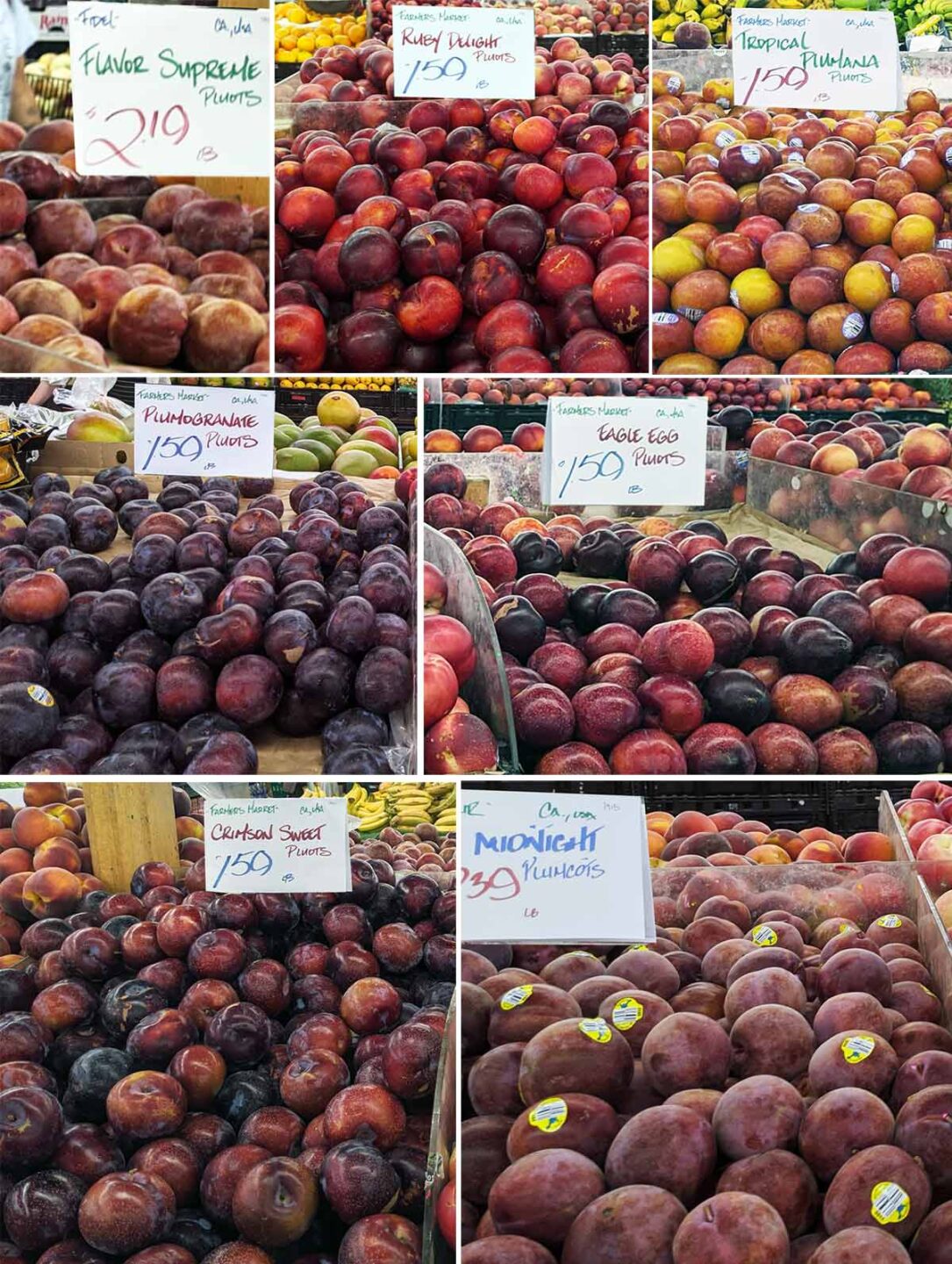When a plum and apricot are crossed, you get plumcots, pluots, and apriums.
Think of the flavor like a juice blend where the sum is better than the parts.
How are they different?
Horticulturalists create these hybrids by using natural breeding to bring out specific characteristics (they aren't GMO). The difference is based on how much of the fruit is genetically from a plum or an apricot.
- Pluots: more plum than apricot
- Plumcots: half plum, half apricot (50-50 split)
- Apriums: more apricot than plum (and have a more apricot color with slightly fuzzy skin). Tend to be sweeter than the other two.
Varieties
Most of the time you'll see these all generically labeled as pluots, plumcots, or apriums. The specific varieties might change throughout the season, so they might taste (and look) different next time you come back to the store.
According to Trader Joe's, "throughout their short season, multiple varieties of Plumcots™ will make an appearance on our shelves—each for a limited window of time."
However, you might be lucky enough to have a store near you that lists specific varietals (like Berkeley Bowl in California or Pete's in Chicago). Varieties you might encounter:

Middle: plumogranate, eagle egg
Bottom row: crimson sweet, midnight
- Flavor supreme - green-yellow skin with dark red flesh, very sweet
- Ruby delight - red skin and red flesh, sweet cherry-like flavor
- Tropical plumana - yellow skin with red areas, yellow flesh, tropical punch-like sweet flavor
- Plumogranate (it is not crossed with a pomegranate) - red skin and red flesh
- Eagle egg - red skin and red flesh, sweet-tart flavor
- Crimson sweet - red skin and pink-red flesh, sweet berry-like flavor
- Midnight - red skin with red and white flesh. Tart and sweet
- Dapple dandy (dinosaur egg) - yellow skin with red flecks, red-pink flesh, slightly tropical flavor
- Flavor grenade - red blush on green-yellow skin, yellow flesh, tropical-apple flavor
A list with pictures of other varieties can be found at HEB online as well.
Season
They are in season about the same time as Apricots, from May until July, sometimes into August.
Some varieties show up from May-June while others are late-season (July-August). This means the specific type of pluot (etc) sold will change throughout the season.
Where to find them
Pluots, plumcots, and apriums are all becoming more popular. Because of their rising popularity, they can be found at most farmers markets across the country, as well as large grocery chains, including Whole Foods, Trader Joe's, Sprouts, HEB, Costco, Jewel, Safeway, Publix, Kroger, Walmart, and Sam's Club.
How to use
They can be used in any plum recipe, since the texture is very similar. Substituting for apricots isn't as straight-forward as the texture can be different, but it's quite possible.
Seasonal plum recipe collection

Leave a Reply